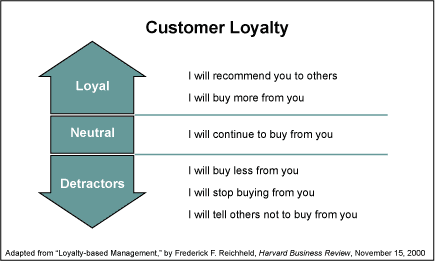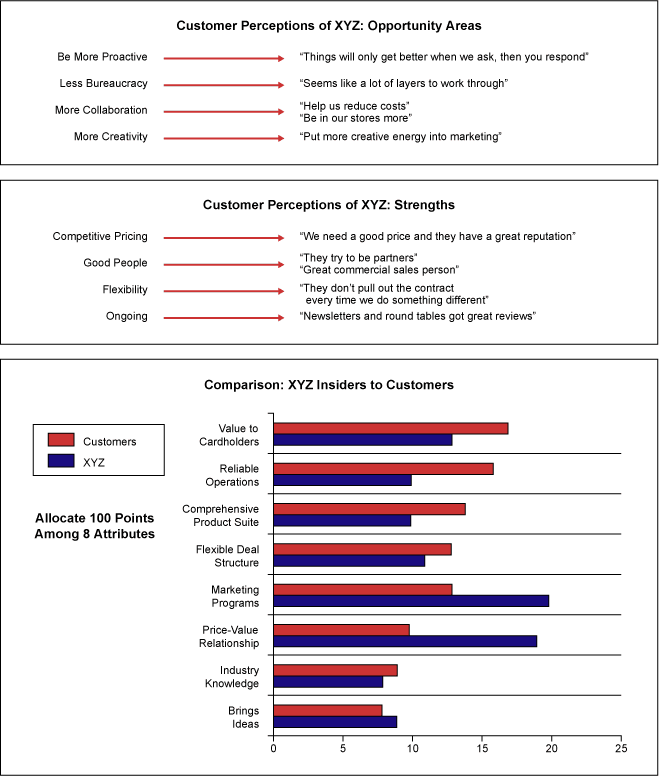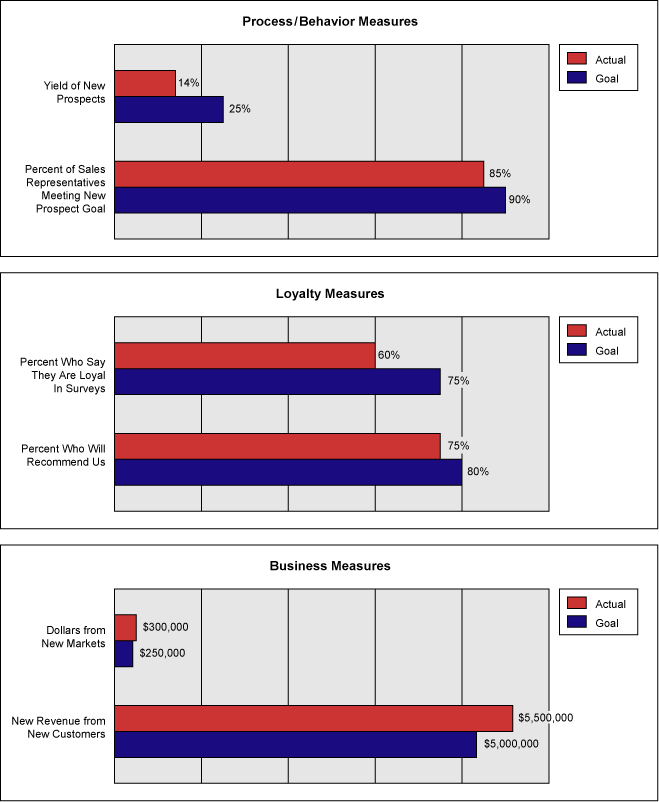
When the vice president for sales calls a Black Belt in to talk about sales, the natural inclination for the Six Sigma practitioner is to look for the “pain points” and work with a team to define the problem and build a solution. This approach will help transform the sales process, but it may not improve sales results. That is because the starting point for increasing sales – and growing the company’s business – is not the salespeople, it is the customers. In sales, Six Sigma can be used to uncover the best ways to build, maintain and grow relationships with key customers. Great relationships are the key to increasing sales.
‘Outside-In’ Thinking: Sales Start with the Customer
When companies invest in sales force effectiveness, they often start with large scale projects like sales automation or customer relationship management (CRM). The time between analyzing the current state, defining requirements and improving the process can be months or even years. Salespeople with daily, weekly and monthly targets quickly lose interest – they do not see the connection between process maps and winning customers.
Chris Moreland, global commercial excellence leader at GE Equipment Services, has led numerous Six Sigma projects in sales. One of Moreland’s biggest challenges is maintaining an external focus. “We often lose sight of the customer when we start thinking about processes and goals. What matters is how customers want to buy and what they want from our salespeople.”
According to Keith Shipp, senior vice president for North American sales at GE Modular Space, salespeople today need to have strong business acumen and a commitment to the customer that extends beyond closing the deal. “That takes a lot more than lunch and a great personality,” he noted. Shipp pointed out that salespeople today work with multiple buyers with complex needs. The buying team looks for support in interpreting the massive amount of data that factor into each buying decision. They also expect the sales team to help them achieve their targets for productivity, cost savings and increased customer service.
Six Sigma can provide a framework for improving the quality of relationships between salespeople and customers. Relationship building has:
- A starting point: The introduction.
- A mid-point: Getting to know each other, learning what the client values and delivering that value.
- An end point: The ongoing strong relationship, where the client recognizes and wants the value the salesperson brings to the relationship.
All of a sudden there is a defined process that matters to the sales force – because great relationships win business.
Focus on What Customers Value in the Buying Process
Six Sigma can have a direct impact on sales results if a company is disciplined in keeping the focus on what customers value in the buying process. This is not about product attributes, customer service or sales support – although data will probably be uncovered that will lead to improvement opportunities in these and other areas. What it is about is the needs of buyers when making a major purchase decision.
Here is how the standard Six Sigma DMAIC roadmap can be used to strengthen the relationships between salespeople and customers.
Define: What Does Sales Expect to Gain?
The challenge in the Define phase is to convince the sales organization that this is a way for them to improve their relationships with key customers and prospects by gathering unique insights into how buying decisions are made.
1. Engage key stakeholders and content experts to work on the project. As the project team is formed, discuss and document the roles each team member will play, time commitments and expected outcomes. Try to build a cross-functional team that includes front-line salespeople and sales managers assigned to key accounts, customer service personnel, sales support and product managers. Eventually, the company may also include external customers on the team.
2. Clearly define the focus of the project. A problem statement that includes the size of the problem, an hypothesis and a scope diagram will help the team to focus on a specific area. The company may decide to focus its initial project on a particular region or product line. Avoid starting too big.
Measure: A Loyalty Baseline
Gathering data in a way that allows the team to draw conclusions and act on them is critical. Conducting short interviews with buyers and prospects is a good way to understand their critical-to-quality attributes (CTQs) relative to the buying process. This data can be collected fairly quickly but does require up-front planning and expertise in survey design. Many companies use an objective third party to conduct the interviews.
Customer loyalty extends beyond satisfaction, and directly impacts business results. The customer who values the product or service will continue to buy and will promote it to others.

There are three steps for data gathering:
1. Identify a set of customers and then segment them based on recent behavior. The project team may want to define the universe of customers based on region, revenue size or product preference. Many organizations are able to leverage data from CRM or other sales applications to create four sub-sets of customers:
- Loyal Customers: Existing customers who are buying more from the company.
- Disloyal Customers: Existing customers who are buying less or have stopped buying.
- Wins: New customers.
- Losses: Prospects that the sales force did not win.
For example, when the credit card division of a global bank developed its customer loyalty baseline, the sample included customers across a range of industries. They also made a point of including several newer customers so they could understand the impact of recent changes in sales strategies and practices.
2. Interview customers. Use non-biased, skilled interviewers to ask representative customers how they make buying decisions. Create an interview guide to walk through the buying process, asking questions about how the client perceives the company’s selling efforts. For example:
- What was your first impression of our salesperson? What value did they bring to your purchase process?
- Were the right people from our organization available and helpful to you during your buying process?
- What did our salesperson do that encouraged you to ask us for a proposal?
- What did our salesperson do for you during the product/service delivery phase?
- What could we do differently to make the buying process easier for you?
The project team also may want interviewers to probe for an accurate understanding of the company’s value proposition, services offered or other key differentiators of the products and/or services.
3. Interview the sales force. Ask the company’s salespeople the same questions. Probe to see how aware the company’s sale force is of the wants and needs of customers.
By interviewing a variety of customers, the project team quickly learns what the company’s salespeople are doing (or not doing) to build great relationships. By interviewing the sales force, the team learns how much the sales force knows about what the customer values in the selling process.
Analyze: What Do Customers Value?
Analyzing qualitative data is different from reviewing Pareto charts, statistical print-outs and customer survey results. Time should be allowed for the project team to absorb the data and engage in testing different hypotheses. There are three steps in analyzing the data.
1. Identify key themes. Engage a team of salespeople and other stakeholders in reviewing the feedback from the interviews. Make it easier for them to interpret the findings by organizing it around key themes and contrasting the responses from customers to those of salespeople.
| Table 1: Contrasting Responses to Key Themes | ||
| Key Themes |
Customers |
Salespeople |
| Why do we win? | ||
| Why do we lose? | ||
| What do we need to do more? | ||
| What do we need to do less? | ||
| What is our value proposition? | ||
Be sure to support the key themes with specific examples so the flavor of the comments are retained and the findings resonate with members of the sales team. The graphs in Figure 2 illustrate how one company used interviews with customers and sales representatives and a short survey to identify opportunities for improvement and measure alignment.

2. Cross reference interview findings with sales performance data. It also is helpful to compare the customer and sales interview data with the profitability data that was used to develop the initial segmentation. This helps in understanding the correlation between what customers say and their buying behavior.
3. Drill down to the root cause. When the project team has fully analyzed the sales process from the perspective of the customer and found the key improvement opportunities, map the sales process and evaluate how salespeople spend their time. This will help find opportunities to strengthen the company’s sales force and support strong relationships.
When Keith Shipp used this process at GE, his team gathered some compelling data on what customers value. He learned that the salespeople who incorporated strategic consulting into their sales process had a 100 percent greater closing rate. Another critical success factor for customers was an existing relationship with another GE business. He called this “boundary-less sales.”
Improve: How Should the Company Sell Differently?
Once it has determined how salespeople deliver value to customers, the project team can develop a focused action plan. Common actions include:
- Changes in pricing strategy: A uniform pricing strategy may not meet the needs of all customers.
- More involvement in product delivery: Salespeople may need to work actively to stay close to the customer once the deal has been closed.
- Training to improve consulting skills: Need may be found for training/development of the sales force.
- Reorganization of the sales function: Internal barriers need to be removed so that the company can more effectively serve customers.
- Cross-functional process reengineering: Customers may be frustrated by the way in which the company integrates sales/credit/distribution, etc.
- Sales rewards/incentives: The company may need to change its sales incentive scheme to promote strong relationships.
- Revised value proposition: Customers can recommend fundamental changes in how the company positions and markets its product.
- Specific actions to support one major customer: There may be specific issues with one large customer that merit deeper investigation and action planning.
GE Equipment Services used the Six Sigma framework to increase the amount of time salespeople spend with customers and cut out low-value-added steps. Focusing on the “order to inquiry” component of the sales process, a cross-functional team was convened for an entire week in a Work-Out session to develop detailed recommendations for changes in the sales process. The session helped to get the team focused and drive results in a short time.
Control: Measuring to Sustain Improvements
Improve is the exhilarating phase – changes are implemented and results begin to be seen. To sustain the momentum, there needs to be a process in place to capture and track data on an ongoing basis. “You need to track data from lead generation to close,” said GE’s Moreland. That can mean going beyond the standard sales measures that capture activity but do not necessarily link to revenue growth. Some sample measures are listed in Table 2.
| Table 2: Sales Measures Beyond Just Sales Activities | |||
|
Activities |
Process/Behavior |
Loyalty |
Performance |
|
Identifies outliers in the organization, but is only a |
Captures success in moving |
Monitors impact on buyer behavior |
Quantifies impact on business results |
| * Number of active leads * Size of proposals * Number of calls on accounts * Face time and trip reports * Expense report filings |
* Named prospect account plans * Productivity of salespeople * Throughput yield and improvement * Meeting account planning deliverables |
* Percent who will recommend * Percent buying more * Percent who stopped buying |
* New revenue from new customers * Penetration of key markets * Renew/replace rate * Profitability |
A simple dashboard can keep the CTQ’s in front of both company leaders and members of the sales force. These key measures should be communicated regularly on a quarterly or monthly basis.

Conclusion: Teaching the Art of Sales
This outside-in approach starts with the premise that great relationships drive growth. It is clearly a back-to-basics approach. Six Sigma is a toolkit and mindset that helps reduce the mysterious art of relationship-building to a set of steps and actions that can be defined, taught, measured and repeated.